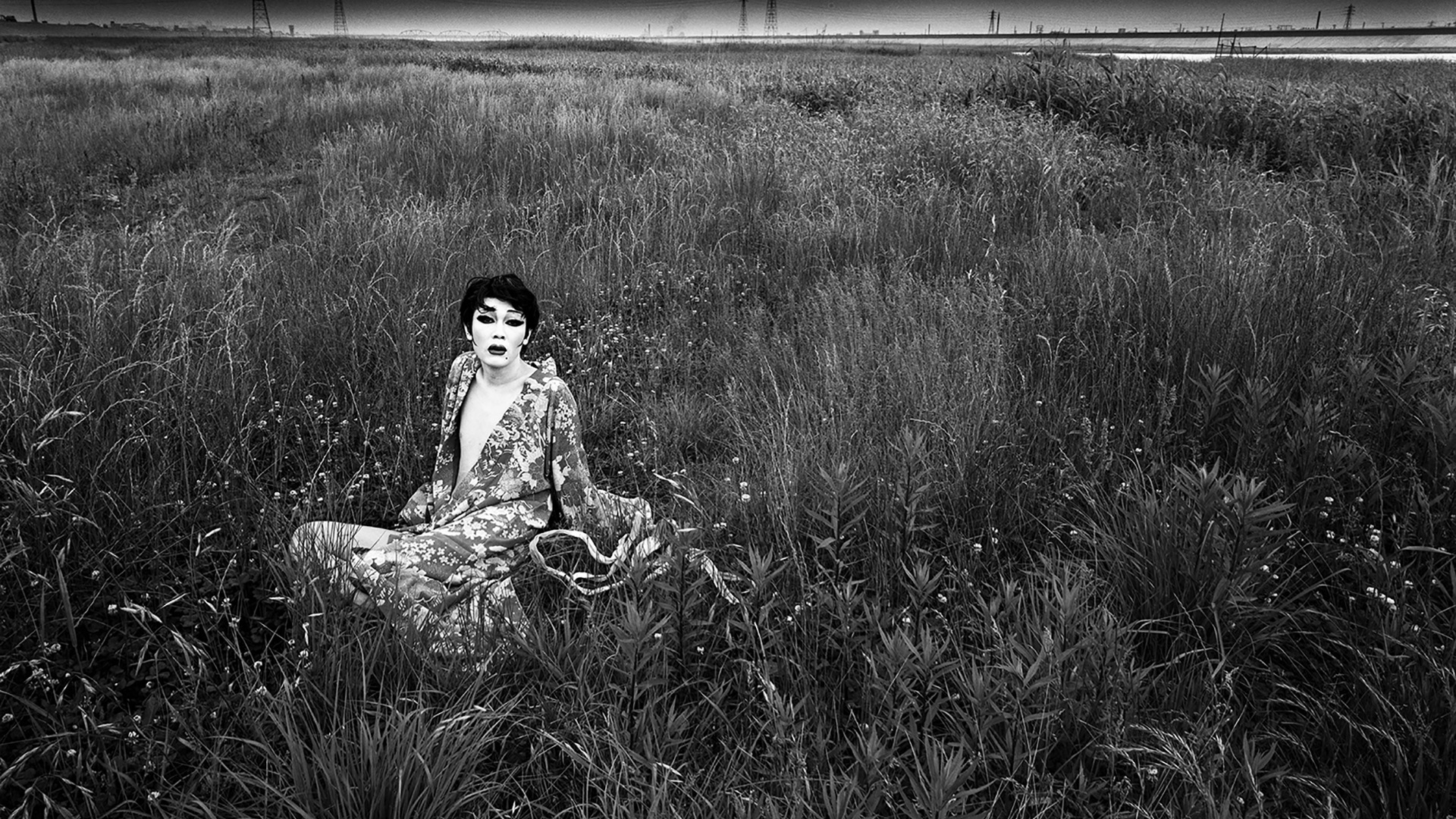
If you like Roland Barthes and his Empire of Signs andare a fan of Japan and its photographers, you’ll be right in your element. To draw a few further connections, let’s also mention the 1990 special issue of La Recherche Photographique devoted to Japan; Nicolas Bouvier’s 1995 exhibition at the American Center in Paris, almost entirely devoted to 1960s’ Japan; of course, the visual tsunami unleashed by Daido Moriyama at La Fondation Cartier pour l’art contemporain in 2003; and, lastly, the magazine Provoke dissected at the BAL in 2016. The same sense of unbound curiosity and wonder, sustained by various institutions and associations, is found in a rich publication, which has, however, devoted little space to Japanese women photographers, as Pauline Vermare pointed out in her fascinating online masterclass at the MEP, on February 4, 2021.
Mack has released a hefty volume entirely dedicated to Eikoh Hosoe, who turned 88 on March 18 (he was born in 1933 in Yonezawa, in Yamagata Prefecture). Edited by Yasufumi Nakamori, the book offers a chronological overview of the photographer’s work, from his early documentary, dark, earthy photos to the arty shots of Gaudí’s “cosmic” architecture in Barcelona. Each chapter comes with a commentary by Hosoe himself, who describes both the context of his shots and their content, not hesitating to remind us how much his work is rooted in memory, particularly that of World War II.


Some of the series are well known, such as the portraits of the writer Yukio Mishima (1925–1970) possessed of canonical beauty, who yields to the photographer’s lens in a state of narcissistic amazement (Ordeal by Roses, 1961–1962). Or the playfully mysterious series featuring Tatsumi Hijikata, the founder of Butoh, “an outstanding dancer,” which shows the dancer and the photographer roaming, like two companions in a tale for child-kings, through the landscapes around Akita, not far from the place where the young Hosoe had been evacuated from the summer of 1944 to the summer of 1945 (Kamaitachi, 1965–1968).
Eikoh Hosoe, who, among other things, taught in the United States and was cofounder of the short-lived collective VIVO, evinces a strong desire to break down stereotypes, to break out from the constraints of the medium, rather than hide from them: photography as his attempt to break free. Hence the feeling of power expressed, for example, in the (naked) bodies he photographed up close, at the limit of intimacy, as if he wanted to prevent them from leaving the frame and savor them better (Embrace, 1969–1970). Or yet the multiple portraits of artists captured in their youth, like Ed van der Elsken in 1959 or Shomei Tomatsu in 1972, who seem to be almost withdrawing from their own story.

Eikoh Hosoe is not a household name, like Nobuyoshi Araki or Daido Moriyama, the former self-centered, the latter autarkic. Hosoe is often met with astonishment, sometimes even incomprehension, because his intriguing aesthetic draws in great measure on theater, on a ritualized imaginary, or even on performance, experienced as deliverance. He is a man of his time, and yet against the grain of time. Thanks to its breadth and editorial precision, this monograph allows us to venture into the secret passageways of a Japanese master, who is less classical than he may appear.
By Brigitte Ollier
Brigitte Ollier is a journalist based in Paris. She has worked for over thirty years for the newspaper Libération, where she contributed to the fame of the column “Photographie.” She is the author of several books about a few memorable photographers.
Eikoh Hosoe, edited by Yasufumi Nakamori, Mack, 400 pp., €65.With text by Christina Yang. English and Japanese editions.
For an instructive interview with Ryuichi Kaneko (1948–2021) about his book collection, conducted by Marc Feustel, click here.
To discover Nicolas Bouvier :
Nicolas Bouvier, Chronique japonaise, Payot 1975.
To listen to Pauline Vermare, historian of photography, and her point of view on Japanese photographers at the Photofestival of Tbilisi (in English), click here.
To discover Japan in Paris, visit Maison de la Culture du Japon.





